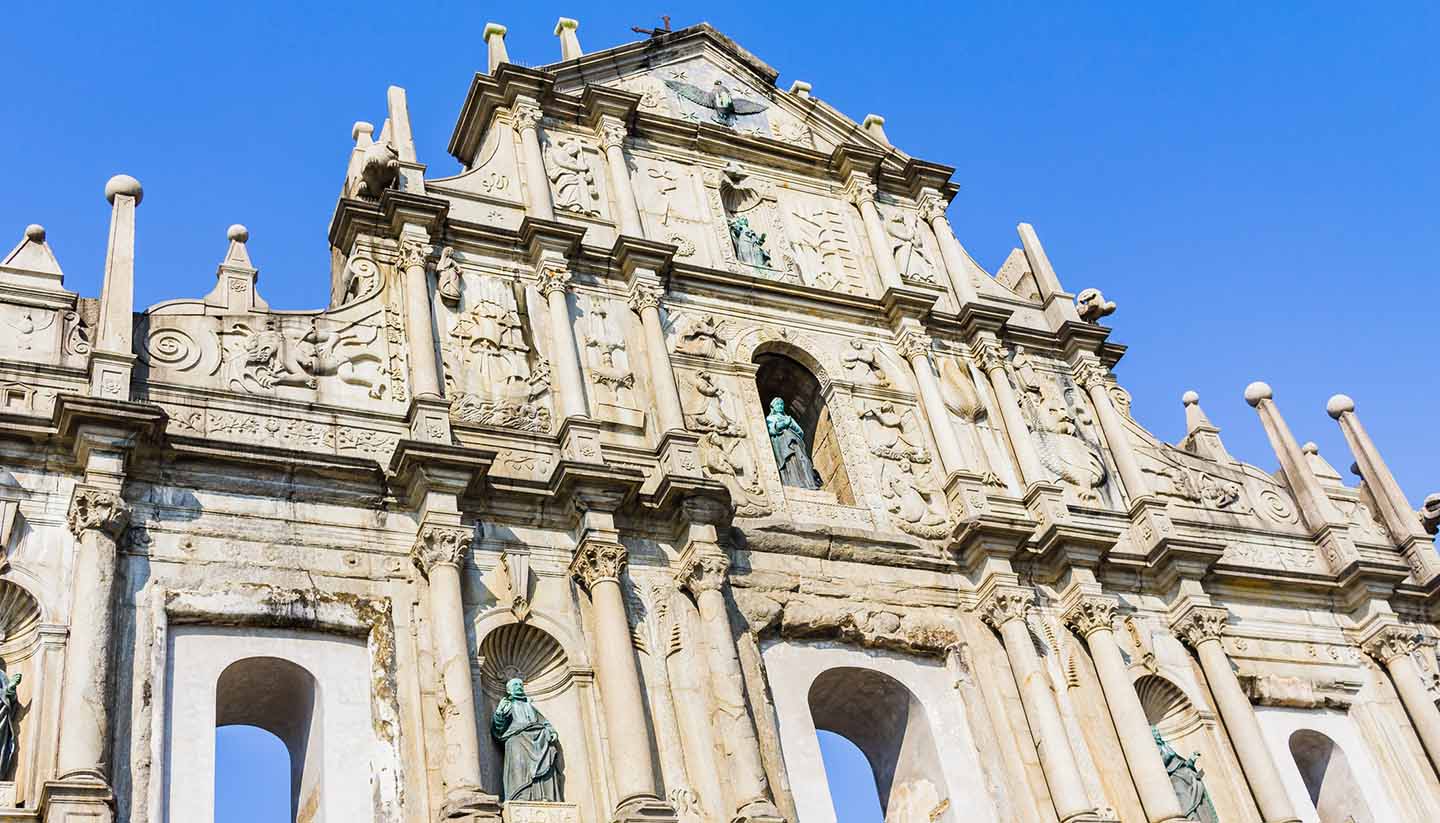Macau History
Posted By admin On 03/08/22Orientation

Macau China
- History Portuguese galleons first visited Macau to trade in the early 16th century and in 1557, as a reward for clearing out pirates endemic to the area, they were allowed to establish a tiny enclave here. As trade with China grew so did Macau, which became the principal meeting point between China and the West.
- Macau, officially the Sovereign City of Macau, is a city-state in the western Pearl River Delta by the South China Sea.With a surface area of only 115 square kilometers and a population of 682,800 inhabitants, Macau is Asia's smallest and second-least populous country.Globally, it ranks only 124th by area and 109th by population among the world's 127 sovereign states.

Macau is a Special Administrative Region of China with an area of 115.4 sq. As observed on the physical map of Maco, the region comprises of a peninsula attached to mainland Asia and the islands of Coloane and Taipa in the South China Sea. Macao was formerly an island itself but was gradually.
Identification. Macau is a city in southern China's Guangdong province, and was until 20 December 1999 an overseas Portuguese territory, founded in 1557. It is now a special administrative region within the People's Republic of China, which agreed to recognize the city's special social and economic system for a period of fifty years.
Macau's status as an outpost of European settlement and commerce in China and its air of isolation gave it a special historical identity. Its population, while politically dominated by the Portuguese and their descendants, was always marked by an admixture of groups and by a steady influx of Chinese migrants. Since the early nineteenth century the majority of the population was Chinese. Macau was located on the old 'silk route' and emerged as a major entrepôt (intermediary) trading center in Southeast Asia in the seventeenth and eighteenth centuries.
The name Macau is derived from the Chinese A-ma-gao Bay of A-Ma. A-ma was the name of a Chinese goddess, popular with the Chinese seafarers and fishermen who had a temple on the peninsula when the Portuguese first anchored there in 1513.
As a creation of the Portuguese, Macau represents a peculiar blend of Oriental and Western influences. This has given rise to a unique and hybrid urban culture, which gives the city an air of romance and nostalgia. At present, it is a rich commercial and industrialized city. Macau also has a reputation, dating from the 1920s and 1930s, as a place of smuggling, gambling, prostitution, and crime controlled by Chinese 'triads' (crime syndicates). Macau's gambling houses were (and are) famous across Asia and still form a popular (Chinese) tourist destination.
Location and Geography. Macau is located on a small peninsula and lies at the western shore of the great Pearl River Delta, opposite Hong Kong. Together with its two islands, Taipa and Coloane (connected to the peninsula by large bridges), it measures only some 8.5 square miles (22 square kilometers). Before inclusion into China in December 1999, Macau was separated from the mainland by the Barrier Gate (Portas do Cêrco) frontier. The city has good air links, and ferry and hydrofoil service to the neighboring islands, the mainland, and Hong Kong. A large international airport was opened in 1995.
There is no flora and fauna to speak of, as buildings have filled up most of the available space, and most primeval forest was used for construction and industrial purposes. Some pine forest remains on Coloane. In the late twentieth century significant land reclamation projects were carried out around the peninsula, creating space for new housing and industries, thus doubling the surface area of the city. The climate of Macau is subtropical and humid.
Macau History In Hindi
Demography. The city's population is about 465,000 (1999), with 95 percent ethnic Chinese. The Portuguese comprise about 3 percent of the population, with the rest including other Europeans, Indians, and various other groups, such as Filipinos. Immigration from China's mainland has always been significant, fueled by the opportunities of Macau's international trade and dynamic urban economy (especially in the twentieth century there was an exponential growth of immigration). At present, population growth is about 1.8 percent annually. Fertility (1.27 children per woman) is low according to Asian standards. Almost 50 percent of the ethnic Chinese population was born outside
Macau, but about 90 percent of the Portuguese were born in Macau.Macau History
Linguistic Affiliation. Indigenous languages spoken are Chinese-Cantonese (Yue dialect and Min dialects, about 96 percent of the population) and Portuguese (about 4 percent). Beijing-Chinese (Putonghua dialect) is a second language and growing in influence (for example, it is used in education). English is also expanding as a language in commerce and tourism. The old Macanese language (Patuá, or Makista) was a typical Creole language, based on Portuguese but heavily influenced by various Chinese dialects and by Malay. It has now virtually died out.
Symbolism. The coat of arms of Macau shows two angels around a shield with a crown, one holding a cross and one holding a globe. Beneath is the motto; 'City of the Name of God, there is none more loyal,' which refers to Macau's Catholic identity and bond with the Portuguese motherland. What the status of this coat of arms will be under Chinese rule is unclear.
As unofficial emblems or symbols of the town one might see the casino as the emblem of 'modernity' (giving the city its main income), and the lone facade of Saint Paul's Cathedral as an apt symbol of Macau's past. This façade, a typical Portuguese structure, is the only remnant of an impressive Catholic church destroyed by fire in the eighteenth century. It may symbolize the near token presence of Portuguese culture in a now predominantly Chinese city that owes the larger part of its wealth to the Chinese fascination with gambling and to the efforts of Chinese businessmen and laborers.